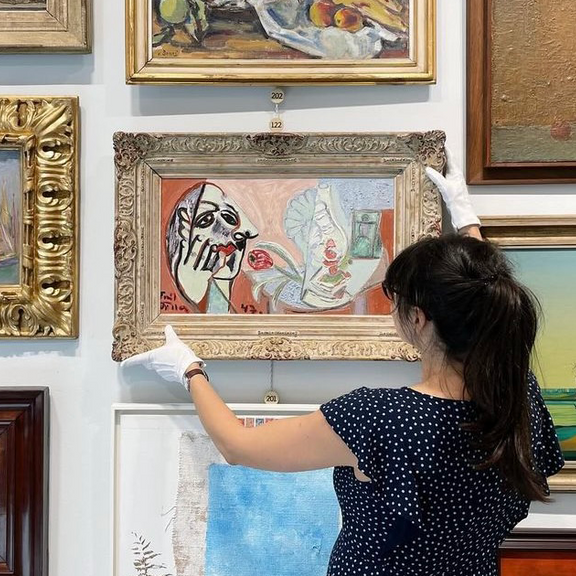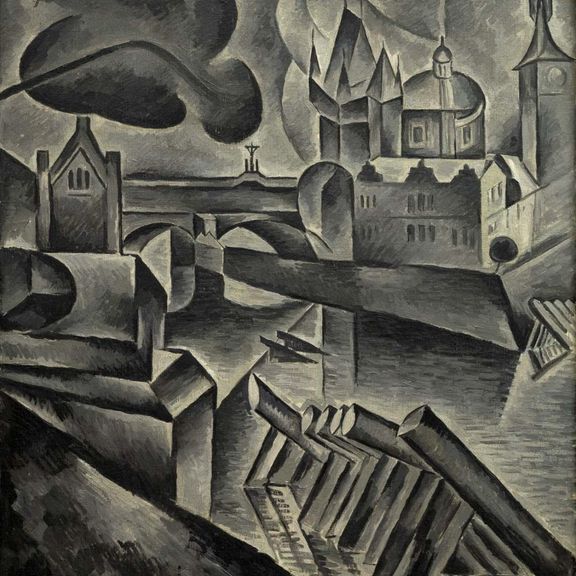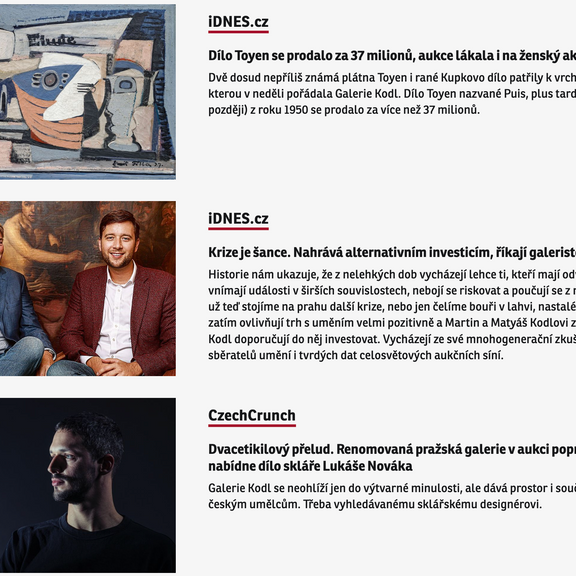
mixed media (oil, enamel) on canvas
1973
lower right
50 × 35 cm
framed
A striking canvas, Golden Veil II is part of a series of later works by Mikuláš Medek where experimentation with materials and colour merges with an existential dimension. It represents Medek’s relationship with a world in which he could not freely express himself in public as an artist and from which he chose to depart in an untimely manner just one year later. Medek had also worked with the motif of the Veil of Veronica, subject matter close to his heart, when completing commissions for churches in South Moravia in the 1960s and 1970s. He touched upon it, for example, albeit in a more abstract manner, in 1971, as part of Stations of the Cross, a set of 14 paintings for St. Joseph’s Church in Senetářov.
In the listed work, created on commission for an owner familiar with Medek’s Stations of the Cross at the Senetářov church, Medek decided to work with the strongly accented motif of a head, which he approached in an almost sculptural manner. Based on a dark, black outline, from which golden orange and red tones emerge, the composition evokes a mysterious face dominated by closed eyes. Medek used contrasting colours to mould a relief-like surface that is almost cracked in places. This haptic corrugation creates contrast and tension with the calm face, which is shrouded in a veil of mystery; the painting thus takes on an almost metaphysical dimension of internal introspection and covert spirituality.
The first owner, Osvald Zukal, purchased the work from the artist in February 1973 (see the dedication on the verso). The painting comes from a quality postwar Prague collection. The work will be included in the upcoming inventory of the artist’s works by PhDr. E. Kosáková-Medková. It was assessed in consultation with Professor J. Zemina and PhDr. E. Kosáková-Medková, an art historian and the artist’s daughter. The expert opinion of PhDr. K. Srp is attached: “[...] It is a significant intersection of his informal morphology with details of the human body, in this case, the motif of two closed eyes; i.e., he transferred the original iconographic Christian motif of the imprint to his own concept. The use of ‘veil’ in the painting’s title is appropriate, even though it only loosely references its original source in the Passion. [...].”







